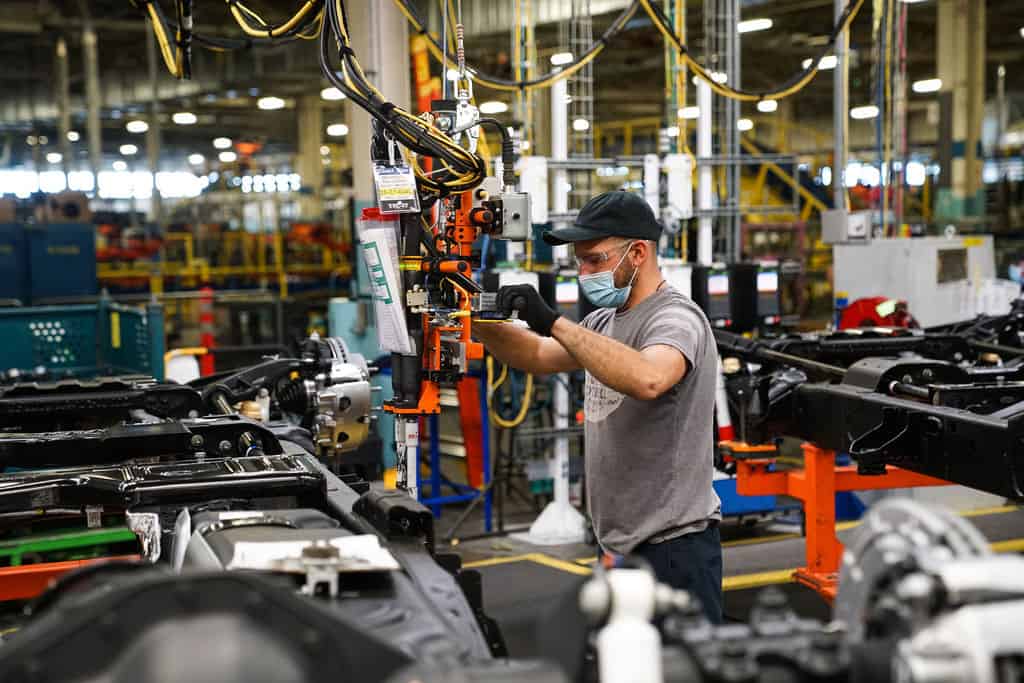Unifor unveils plan to “transform” auto sector and preserve jobs in Oshawa, Oakville and Brampton
Published August 11, 2022 at 3:33 pm

Unifor has unveiled a 29-point plan to transform the Canadian auto sector and to turn Canada into a global leader in electric vehicle production.
Union members endorsed the new policy at their convention in Toronto this week that also saw Unifor choose a new national president in Lana Payne, the first woman to hold the role.
“We have all the ingredients necessary to transition to electric vehicle manufacturing and grow our economy, while creating good union jobs and reducing Canada’s carbon footprint all at the same time,” said Payne Thursday, at her first news conference as Unifor’s top executive, replacing disgraced former president Jerry Dias.
The comprehensive policy document, entitled ‘Navigating the road ahead – rebuilding Canada’s powerhouse auto sector’ has five main pillars: growing the domestic auto and auto parts industries, managing the transition to a net zero carbon economy, enhancing skills capacity, creating high quality, unionized jobs and advancing equity and inclusion throughout auto workplaces and related communities.
One of the key recommendations is the establishment of a federal ministry dedicated to the automotive sector, though Payne said at her news conference that talks between the union, which represents 315,000 workers in a variety of sectors across the country (including more than 40,000 members working in auto assembly plants, parts factories and dealerships) and Ottawa have not yet begun.

Unifor National President Lana Payne
“You are the first to hear about this,” she told reporters. “There’s lots of work ahead.”
According to the policy document, allocating responsibility for Canada’s auto sector strategy to a dedicated Ministry is crucial. “Efforts to coordinate a comprehensive and national industrial strategy across various federal ministries and agencies without a dedicated oversight body is both challenging and an inefficient use of government resources. The same is true for provincial governments, notably Ontario.”
The document also called for a program to help auto parts makers and workers transition their facilities and skill sets to produce electric vehicle components and to begin producing more electric vehicle battery-grade materials. Domestic semiconductor production – something that is in extreme short supply these days – is also on the wish list.
Payne said the plan is the product of nearly a year’s work by many key production and skilled trades union members in auto assembly and auto parts manufacturing.
The document is available on Unifor’s new website www.uniforautohub.ca.
“Adopting these recommendations is the best path forward for all levels of government to create the conditions for a strong, resilient and forward-looking auto industry that supports autoworkers,” said Payne.
The union, which believes Canada is at an “inflection point” in auto-making history – a time of significant and uncertain change facing the industry and its workers – can strategically position itself as a global leader at every stage of the supply chain, despite shedding 20 per cent of its automotive workers in the past twenty years.
“The next step is to adopt the policy,” Payne said. “We know what’s needed, especially in the supply chain part of it.”
“With more than $10 billion invested in the sector, we have the opportunity to build on this incredible momentum,” added John D’Agnolo, President of Unifor Local 200 and Chair of the Unifor Auto Council, representing members who work at Ford, General Motors and Stellantis. “Governments, industry and workers have to continue to work together and implement this ambitious and comprehensive plan.”
insauga's Editorial Standards and Policies advertising





